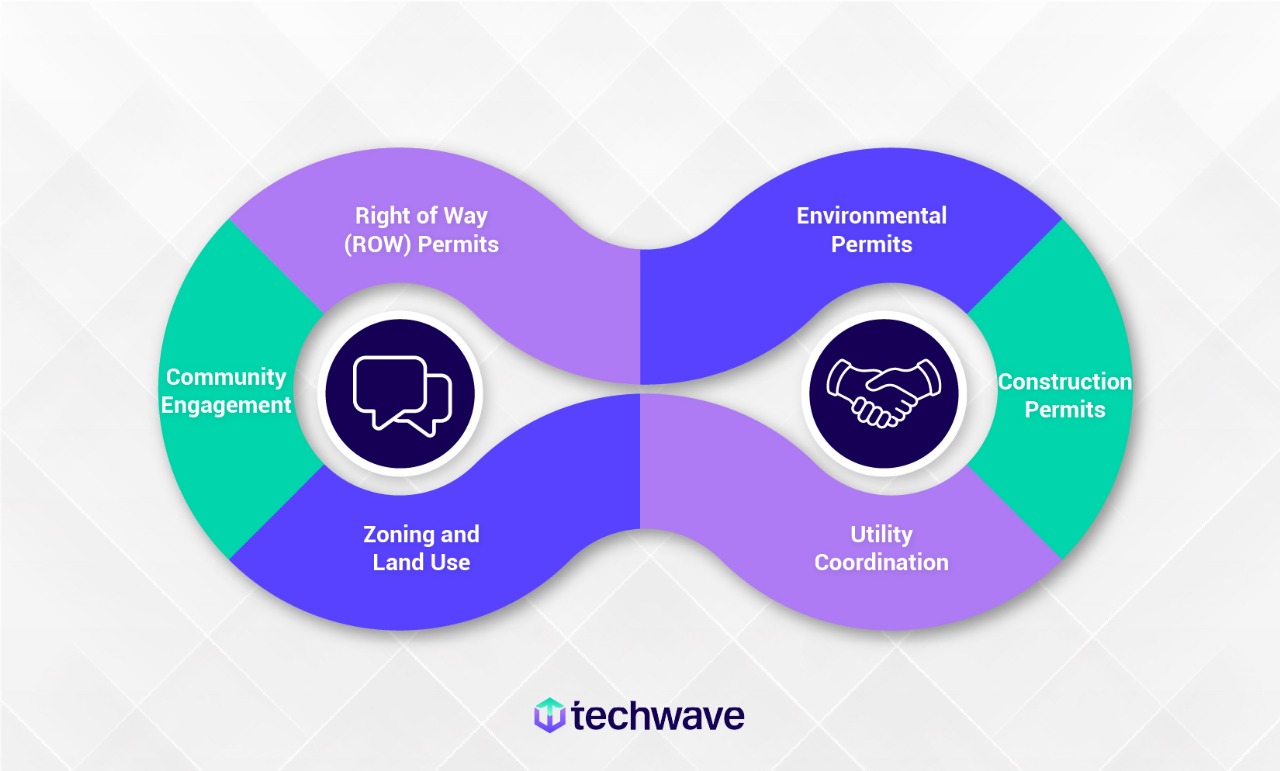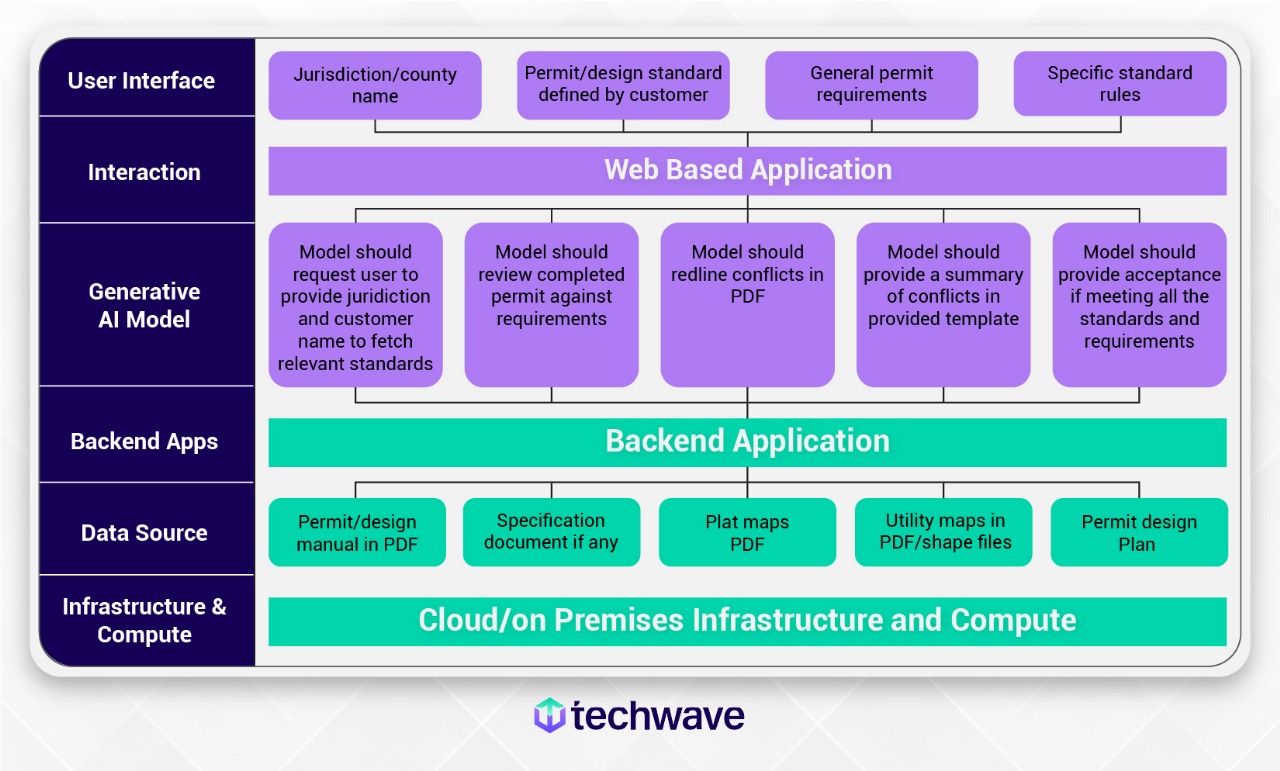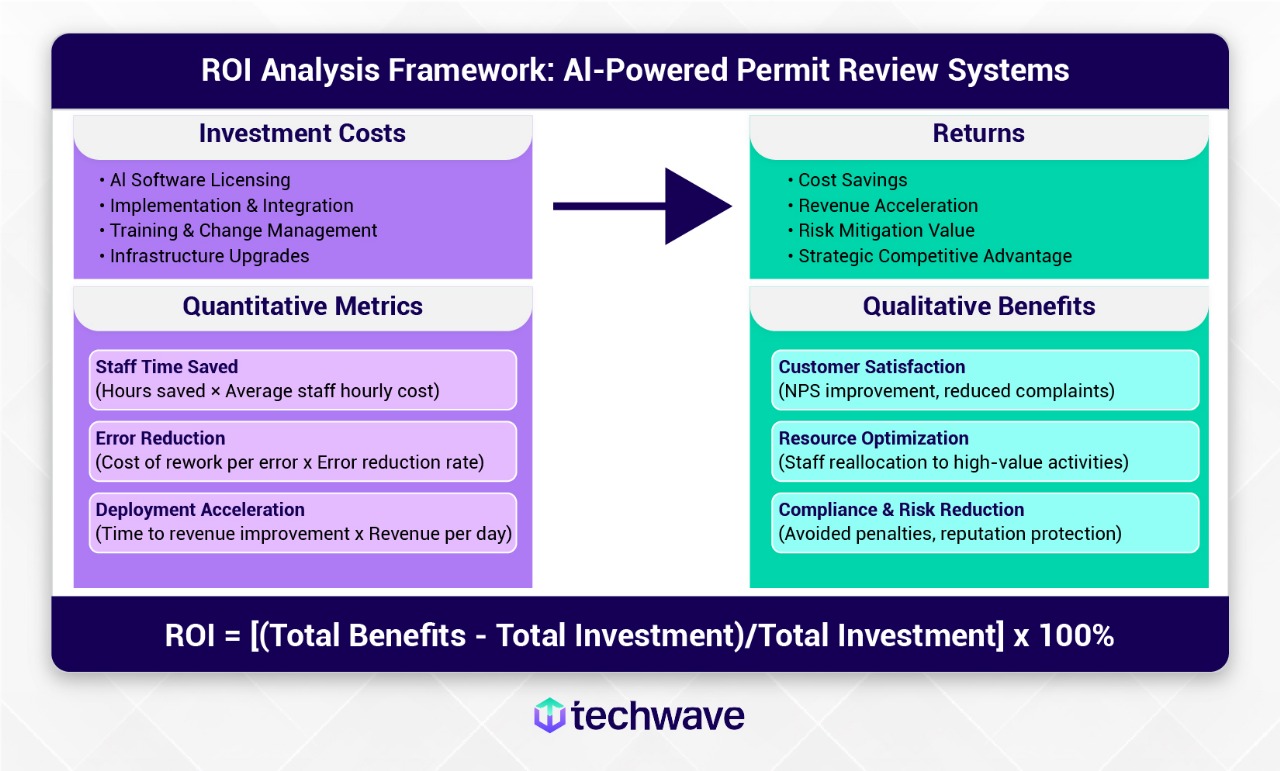
Whether it’s a major infrastructure or engineering project, permits play a vital role in ensuring regulatory compliance. These major economies assure safety, environmental protection, and adherence to local and federal standards. In the telecommunication industry, the complexity of permits runs around planning and designing networks. This includes governing activities such as putting down fibre optic cables, installing poles and towers, and coordinating with existing utilities. However, traditional permit review processes are often slow, error-prone, and resource-consuming. With artificial intelligence (AI) being incorporated, one can now obtain precision, efficiency, and cost savings.
Let us explore how AI is revolutionizing permit review processes, with a focus on telecom network design and drawing on innovative solutions like Techwave.
The Role of Permits in Telecom Network Design
Permit management in telecom network planning ensures legal, safe, and environmentally responsible project execution. Key permit types include:

- Right of Way (ROW) Permits: It allows telecom companies to set up infrastructure on public or private property.
- Environmental Permits: It protects ecosystems, particularly in sensitive areas.
- Construction Permits: This allows construction activities like trench digging or tower installation to meet their safety standards without causing any harm.
- Utility Coordination Permits: Helps to avoid conflicts with existing underground/overhead utilities.
- Zoning and Land Use Permits: Ensures that the project is aligned with the applicable municipal plans.
- Community Engagement Permits: Incorporates public input to support efforts.
Applying for these permits needs extensive documentation. These include architectural & engineering plans, proof of ownership, zoning compliance, environmental impact assessments, structural calculations, utility plans, and more. The complexity and variability of requirements across jurisdictions make the process very difficult, ultimately causing delays in projects.
Current Industry Challenges in the Permit Review Process
The traditional permit review processes relied heavily on manual validation, which presents several challenges listed below:
- Time-Consuming Processes: It is a very time consuming process to collect and validate jurisdiction-specific requirements and check designs against standards, and cross-check Platt & utility maps as these are manual tasks.
- Human Error: Manual reviews often lead to oversights, leading to inaccurate permit designs or sometimes not being designed properly at all.
- Delays in Approvals: Backlogs in permit processing can result in delays of projects forcing clients to incur additional costs & collapsing their confidence.
- Resource Inefficiency: Redlining issues in PDFs and summarizing discrepancies require a lot of time & specialized knowledge.
- Inconsistent Standards: Variations in local regulations complicate compliance efforts.
In order to fix these inefficiencies, we need a smart approach to fasten the permit review process, one that leverages smart technology to modernize the workflows & upgrade accuracy.
Techwave’s AI-Powered Permit Review | A Game-Changer
AI is redefining the permit review scenario by automating & optimizing complex or critical tasks. Techwave’s web-based AI platform demonstrate how technology can address the complications of manual processes. By using AI, telecom companies can now easily streamline their workflows, reduce errors, and accelerate their project timelines. Here’s how AI permit processing is making a difference:

1. Automated Collection of Permit Requirements
AI tools can independently gather the latest rules and permit requirements from jurisdiction websites. This makes sure that the designs are evaluated based on current government standards. It also eliminates the need for manual research, resulting in saving time & reducing the risk of missing any critical regulations.
2. Verification of Platt and Utility Maps
AI cross-references Platt and utility maps to confirm that they follow current regulatory and technical specifications. By leveraging AI and machine learning, this process is also shaping the future of geospatial technology that enhances map accuracy and compliance.
3. Intelligent Document Processing
Being smart, AI models automatically validate given permit designs in order to meet the jurisdiction requirements. By identifying any inconsistency, these systems generate detailed reports in predefined templates, which allows the project managers clear guidance for corrections compliance.
4. Conflict Redlining and Reporting
In case of any deviation detection, our AI integrated tool automatically redlines conflicts in PDFs and summarizes issues, their locations and types. This approach enhances transparency and simplifies the entire revision process.
5. Accelerated Permit Acceptance
If a given design meets all the required standards of the project, then AI can instantly provide acceptance by reducing approval times significantly. This capability enables the projects to achieve their need on time and within their budgets.
The Benefits of AI Integration

The adoption of AI permit flow review brings transformative benefits for telecommunication companies, regulators, and stakeholders. They are:
- Reduced Manual Effort: Automation reduces the time and effort required for mundane and manual tasks, leading to freeing up resources to concentrate on high-value tasks.
- Cost Savings: By minimizing errors & accelerating approvals, AI reduces project costs for applicants as well as reviewing agencies.
- Quicker Approvals: AI expedites the review process faster than manual checks, removing backlogs and facilitating quick project execution.
- Improved Quality: AI ensures designs comply with all the specifications needed, making the network infrastructure safe and reliable.
- Improved Customer Confidence: Faster, more reliable approvals instill customer and stakeholder confidence and trust.
Techwave’s Vision for the Future
At the forefront of this revolution, Techwave’s AI-driven solution is at the forefront of transforming the way permits are perceived and how technology can solve long-standing issues in permit review. By integrating AI into a user-friendly web application, Techwave empowers telecom companies to navigate intricate regulatory frameworks effortlessly. The solution’s ability to automate a project’s requirement collection, validate designs, and provide actionable insights is setting a new standard for the whole industry.
Looking ahead, the continued evolution of AI promises even greater achievements. Machine learning (ML) models can not only predict conflicts before designs but even submit them, which will help in reducing revisions.
Similarly, resolving the challenges of telecommunication networks, such as delays in permitting and utility conflicts, could be revolutionized by AI. With jurisdictions going digital, AI can make permit reviews instantaneous through real-time compliance checks.
The integration of AI into permit review processes is one of the best advancements for the telecom industry. From facing the challenges of traditional permit methods—manual effort, errors, and delays— to fixing it with Techwave’s AI-powered solutions are lending you a hand to drive quality and innovation. As telecom networks expand to meet growing connectivity demands, AI will play a vital role in turning the permit processes into fast and cost-effective.
Embracing this technology is not just a step forward; it’s a leap toward a smarter, more connected future. You can also fast-process your permit review process with Techwave’s innovation. Join us today and learn more!
